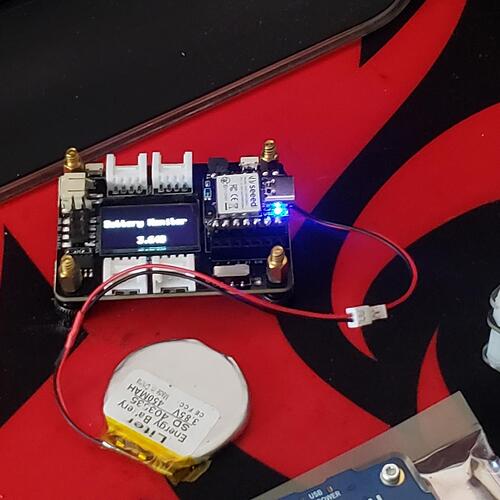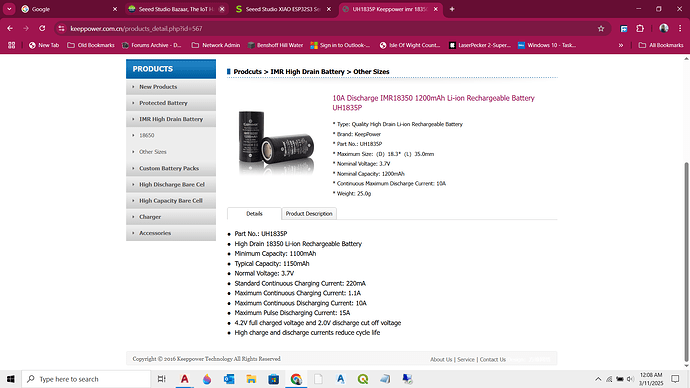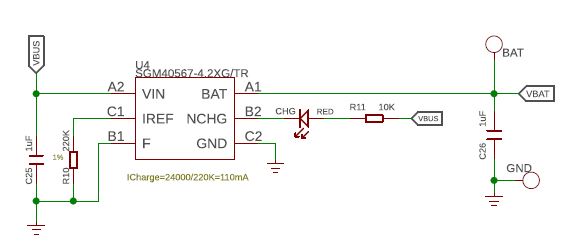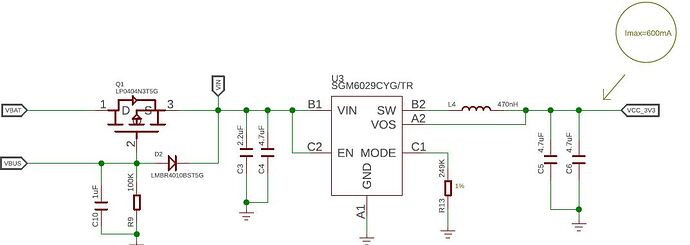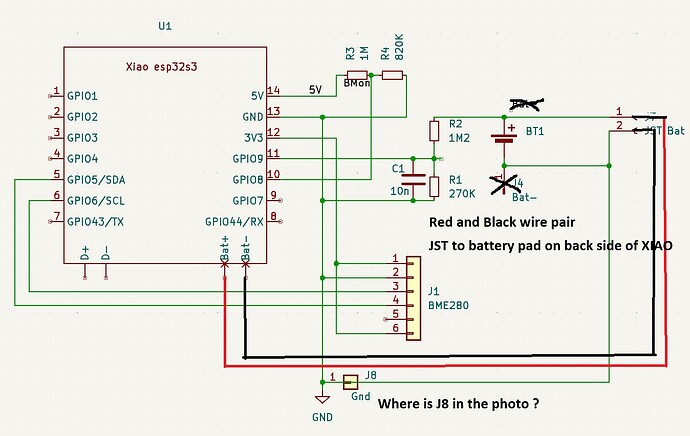Man, You definitely got a handle on this, I did some looking and found out about “Forced” mode Saves running power based on the sample rate! , You knew that … 
According to the BME280 datasheet, the typical power consumption is based on the data refresh rate, which is normally quoted for 1 Hz operation.
Since the provided code reads data at 0.5 Hz (one sample every 2 seconds), the power consumption will be lower than the values listed for 1 Hz operation.
FROM the datasheet…
Average current consumption (typ.) (1Hz data refresh rate)
1.8 μA @ 1 Hz (H, T)
2.8 μA @ 1 Hz (P, T)
3.6 μA @ 1 Hz (H, P, T)
T = temperature
Average current consumption in sleep mode
0.1 μA
The BME280 power consumption scales approximately linearly with sample rate. The provided typical values at 1 Hz are:
- Humidity + Temperature (H, T): 1.8 μA
- Pressure + Temperature (P, T): 2.8 μA
- Humidity + Pressure + Temperature (H, P, T): 3.6 μA
- Sleep mode: 0.1 μA
Since the given code reads only temperature (bme.readTemperature()), it falls under T-only operation.
At 1 Hz, temperature-only mode would typically be around 1.8 μA.
Since the sample rate in the code is 0.5 Hz (half of 1 Hz), we can estimate the average current draw as:
1.8 μA
----- =0.9 μA (approximate)
2
- BME280 in Sleep Mode (Most of the Time)
The BME280 automatically enters sleep mode (0.1 μA) between measurements.
Since the delay(2000); is much longer than the sensor’s measurement time (~1.5 ms), it will be in sleep mode most of the time.
- I2C Power Consumption
If the microcontroller keeps the I2C bus active, there could be additional power drain from pull-up resistors (typically in the μA range).
- MCU Power Consumption Dominates
The BME280 is ultra-low power, so the MCU’s power consumption (e.g., nRF52840) will be significantly higher than the sensor’s sub-μA draw.
considering this: AI suggest this code 
#include <Wire.h>
#include <Adafruit_Sensor.h>
#include <Adafruit_BME280.h>
#include <esp_sleep.h>
#define SEALEVELPRESSURE_HPA (1013.25)
Adafruit_BME280 bme; // I2C
void setup() {
Serial.begin(115200);
Wire.begin();
if (!bme.begin(0x76)) {
Serial.println("BME280 not found! Check wiring.");
while (1);
}
// Set BME280 to Forced Mode (low power)
bme.setSampling(
Adafruit_BME280::MODE_FORCED,
Adafruit_BME280::SAMPLING_X1,
Adafruit_BME280::SAMPLING_NONE,
Adafruit_BME280::SAMPLING_NONE,
Adafruit_BME280::FILTER_OFF
);
Serial.println("BME280 Initialized. Taking measurement...");
// Take a single measurement
bme.takeForcedMeasurement();
Serial.print("Temperature = ");
Serial.print(bme.readTemperature());
Serial.println(" °C");
// Configure ESP32C6 to wake up after 2 seconds
esp_sleep_enable_timer_wakeup(2000000); // 2 seconds in microseconds
Serial.println("Going to deep sleep...");
esp_deep_sleep_start();
}
void loop() {
// ESP32C6 will never reach here; it resets after deep sleep.
}
This code:
 Uses Forced Mode for BME280 (auto-sleeps after reading).
Uses Forced Mode for BME280 (auto-sleeps after reading).
 Puts ESP32C6 into deep sleep for 2 seconds (instead of
Puts ESP32C6 into deep sleep for 2 seconds (instead of delay(2000);).
 Wakes up using RTC Timer to read BME280 again.
Wakes up using RTC Timer to read BME280 again.
 Dramatically reduces power consumption!
Dramatically reduces power consumption!
Expected Power Savings
| Mode |
ESP32C6 Power Draw |
BME280 Power Draw |
Total |
| Always On (delay(2000)) |
~20mA |
~1.8µA |
~20mA |
| Forced Mode (BME280 auto-sleeps) |
~20mA (active) |
0.9µA |
~20mA |
| Deep Sleep Mode (ESP32C6 sleeps) |
10-20µA |
0.1µA |
10-20µA |
 Massive power savings! Your battery will last MUCH longer.
Massive power savings! Your battery will last MUCH longer. 
I’ll be testing it time permitting , I have a BME280 here somewhere
I thought it worthy a highlight 
HTH
GL  PJ
PJ 
